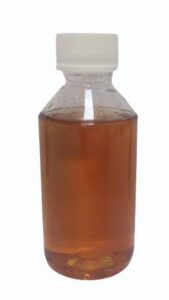Textile Pretreatment Chemicals
Textile pretreatment chemicals are essential in the textile industry, serving as the first step in the fabric processing chain. These chemicals are used to prepare textiles for dyeing and finishing processes by removing impurities, enhancing fabric properties, and ensuring uniform dye uptake. The pretreatment process typically involves scouring, bleaching, and mercerizing, each requiring specific chemicals tailored to the type of fabric and desired outcome.
Uses of Textile Pretreatment Chemicals
-
Scouring Agents: These chemicals are used to remove natural impurities such as oils, waxes, and dirt from the fabric. This step is crucial for achieving a clean surface that allows for better dye adhesion.
-
Bleaching Agents: Bleaching agents are employed to lighten the fabric and remove color impurities. This process is vital for achieving a uniform base color before dyeing.
-
Mercerizing Agents: This process involves treating cotton fabrics with sodium hydroxide to enhance their strength, luster, and dye affinity. Mercerization improves the overall quality of the fabric.
-
Sequestering Agents: These chemicals help in binding metal ions that can interfere with dyeing processes, ensuring that the dyeing is uniform and vibrant.
-
Wetting Agents: Wetting agents facilitate the penetration of water and other chemicals into the fabric, ensuring even treatment during the pretreatment process.
Technical Data Table
| Chemical Name | Type | Function | Application Method | Dosage (g/L) | pH Range | Safety Precautions |
|---|---|---|---|---|---|---|
| Sodium Hydroxide | Alkali | Mercerizing | Batch or Continuous | 20-50 | 12-14 | Wear gloves and goggles |
| Hydrogen Peroxide | Bleaching Agent | Bleaching | Batch | 5-15 | 10-11 | Handle with care, avoid skin contact |
| Nonionic Surfactants | Wetting Agent | Scouring | Continuous | 1-5 | 6-8 | Use in well-ventilated areas |
| EDTA | Sequestering Agent | Metal ion binding | Batch | 0.5-2 | 6-8 | Avoid inhalation, use PPE |
| Sodium Carbonate | Alkali | Scouring | Batch | 10-30 | 9-11 | Use gloves, avoid ingestion |
Conclusion
Textile pretreatment chemicals play a pivotal role in ensuring the quality and performance of textiles. By selecting the appropriate chemicals and applying them correctly, manufacturers can enhance the fabric’s properties, leading to better dyeing results and overall product quality. Understanding the technical data and safety precautions associated with these chemicals is crucial for effective and safe usage in the textile industry.

